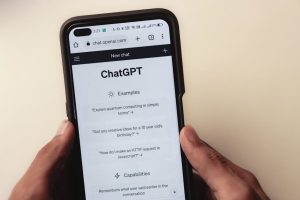Unveiling the Impact of Italy’s Piracy Shield: A Double-Edged Sword in Anti-Piracy Enforcement
The introduction of Italy’s Piracy Shield platform marked a significant step in the fight against online piracy. Launched in 2023 and continuously refined over the subsequent years, Piracy Shield mandates Internet Service Providers (ISPs) to block reported IP addresses and fully qualified domain names (FQDNs) within just 30 minutes of detection. While it has proven effective in curbing illegal streaming—especially for live events like football matches—its impact extends far beyond this initial goal. The relentless drive toward fast enforcement has created unintended ripple effects that threaten legitimate websites, essential infrastructure, and even the principles of a free and open Internet.
What Is Piracy Shield and How Does It Work?

Pexels
Piracy Shield operates as a fast-response system aimed at protecting live content, such as sports broadcasting, from unauthorized sharing. Over time, its scope has expanded to address a broader array of audiovisual materials. The platform empowers ISPs to act swiftly, but its opaque nature has sparked widespread debate. The official blocklist, maintained by AGCOM—the Italian communications regulator—remains inaccessible to the public, limiting transparency. Individuals must rely on lookup tools to check whether specific IPs or domains are blocked, but these tools do not offer bulk export capabilities. This lack of visibility has fueled frustration among businesses, operators, and citizens alike.
Collateral Damage: Legitimate Websites Bear the Brunt

Pexels
Italy’s Piracy Shield has not been without controversy. A significant concern revolves around the phenomenon of overblocking. For instance, essential services like Google Drive and content delivery networks (CDNs) have been inadvertently disrupted due to indiscriminate blocking at the IP level. Research reveals that shared infrastructures are particularly vulnerable. A single blocked IP address, often shared among dozens or even hundreds of unrelated services, can lead to extensive collateral damage. Over 500 confirmed legitimate websites were blocked in one study, with total affected domains numbering in the thousands.
While copyright enforcement is necessary, the indiscriminate nature of IP-based blocking creates more problems than it solves. Legitimate services such as email servers, DNS configurations, and DDoS mitigation networks have all experienced outages linked to Piracy Shield enforcement. Issues arise especially in environments where shared hosting and address recycling are common, causing significant delays before legitimate services can be unblocked and recover functionality. This has sparked a call for more nuanced approaches to piracy enforcement.
Transparency and Reform: The Path Forward

Pexels
The lack of transparency surrounding Piracy Shield’s blocklist has become a focal point for criticism. Citizens and industry stakeholders have repeatedly filed freedom-of-information-style requests to access the blocked resources, only to be denied by AGCOM. Meanwhile, an unofficial GitHub repository, updated regularly since October 2024, has provided a glimpse into these restrictions. Data cross-referenced with official tools revealed the widespread impact of blocking decisions, including cases where AGCOM quietly reversed its actions to restore legitimate services.
Experts argue that a more deliberate and cautious approach is required. Strategies such as adopting an FQDN-first model, applying time-limited blocks, publishing transparent blocklists, and enabling streamlined procedures for unblocking legitimate services could significantly reduce collateral damage. Ultimately, the emphasis should shift toward legal pathways to pursue pirate operators, particularly given that most blocked IPs are based within the European Union—where copyright holders can take action through established legal channels.
The Bigger Picture: Rethinking Piracy Shield

Pexels
Italy’s Piracy Shield highlights the complex challenges of balancing piracy enforcement with the need to preserve an open and functional Internet. While the platform has been effective in some respects, its broad and blunt blocking measures often outweigh the benefits, leading to unpredictable and widespread consequences. Stakeholders, including AGCOM and the Italian government, must urgently reconceive the initiative to reflect these realities.
Publishing the blocklist after enforcement and collaborating with operators and policymakers to mitigate disruption risks are critical next steps. Without this reform, Piracy Shield risks undermining the very digital infrastructure it aims to protect. Moving forward, the focus must be on proportionality, accountability, and the development of piracy-fighting measures that uphold core Internet principles.



